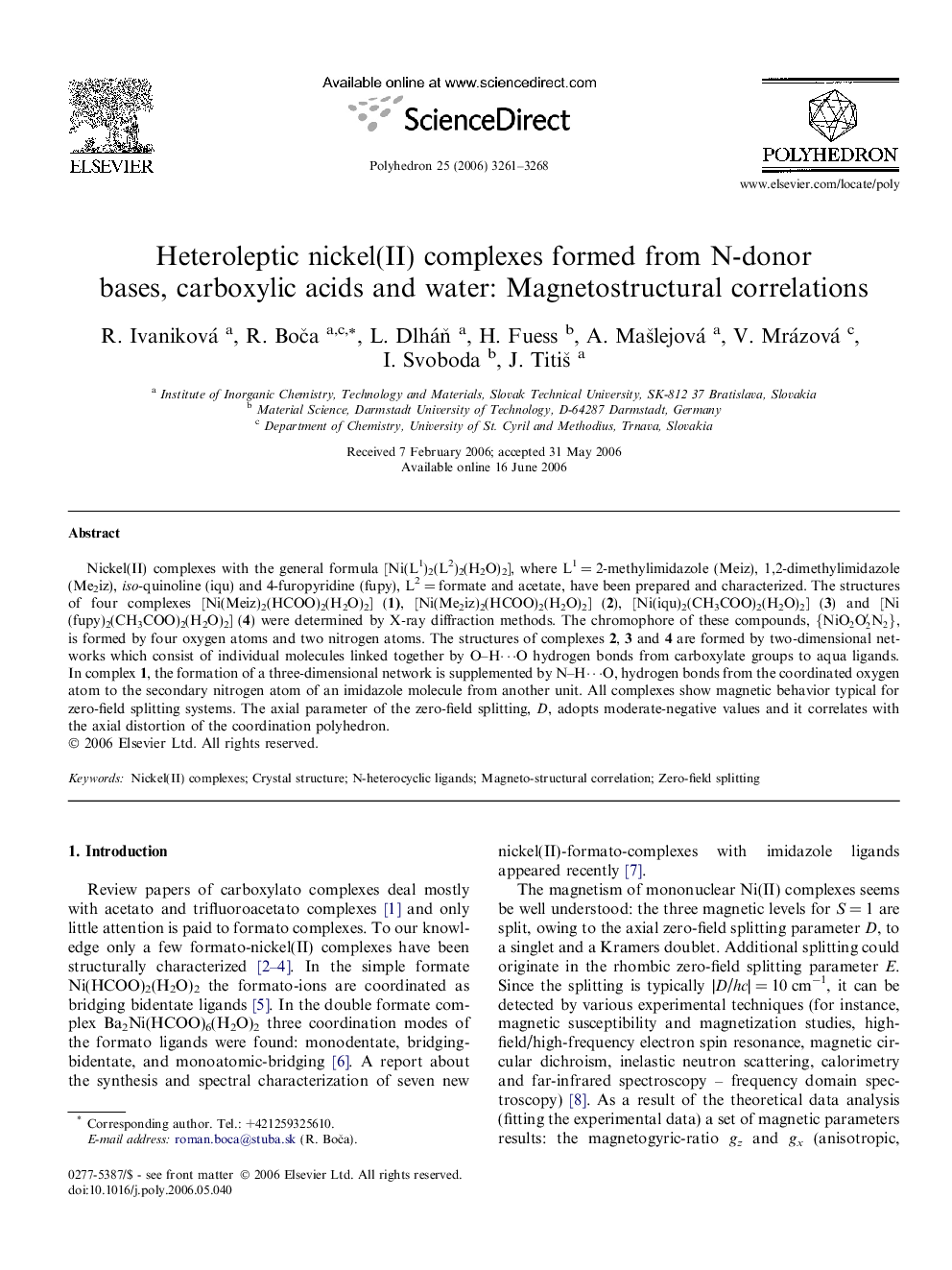| Article ID | Journal | Published Year | Pages | File Type |
|---|---|---|---|---|
| 1340431 | Polyhedron | 2006 | 8 Pages |
Nickel(II) complexes with the general formula [Ni(L1)2(L2)2(H2O)2], where L1 = 2-methylimidazole (Meiz), 1,2-dimethylimidazole (Me2iz), iso-quinoline (iqu) and 4-furopyridine (fupy), L2 = formate and acetate, have been prepared and characterized. The structures of four complexes [Ni(Meiz)2(HCOO)2(H2O)2] (1), [Ni(Me2iz)2(HCOO)2(H2O)2] (2), [Ni(iqu)2(CH3COO)2(H2O)2] (3) and [Ni(fupy)2(CH3COO)2(H2O)2] (4) were determined by X-ray diffraction methods. The chromophore of these compounds, {NiO2O2′N2}, is formed by four oxygen atoms and two nitrogen atoms. The structures of complexes 2, 3 and 4 are formed by two-dimensional networks which consist of individual molecules linked together by O–H⋯O hydrogen bonds from carboxylate groups to aqua ligands. In complex 1, the formation of a three-dimensional network is supplemented by N–H⋯O, hydrogen bonds from the coordinated oxygen atom to the secondary nitrogen atom of an imidazole molecule from another unit. All complexes show magnetic behavior typical for zero-field splitting systems. The axial parameter of the zero-field splitting, D, adopts moderate-negative values and it correlates with the axial distortion of the coordination polyhedron.
Graphical abstractFour nickel(II) complexes with the general formula [Ni(L1)2(L2)2(H2O)2], where L1 = 2-methylimidazole, 1,2-dimethylimidazole, iso-quinoline and furo[3,2-c]pyridine, L2 = formate and acetate, have been prepared and their structures determined by single-crystal X-ray diffraction techniques. All complexes show magnetic behavior typical for zero-field splitting systems. The axial parameter of the zero-field splitting, D, adopts moderately negative values and it correlates with the axial distortion of the coordination polyhedron.Figure optionsDownload full-size imageDownload as PowerPoint slide
